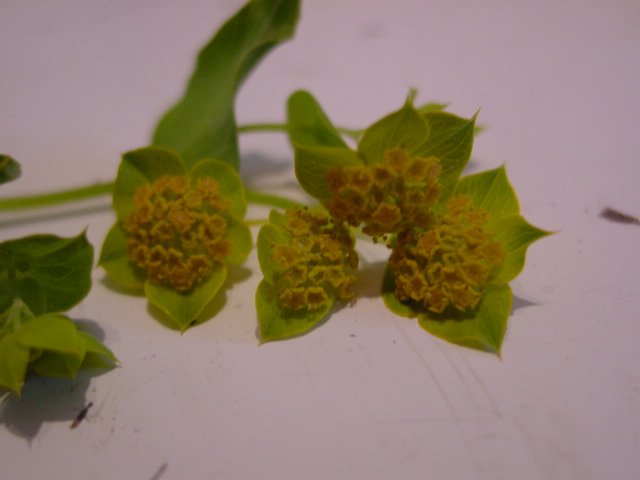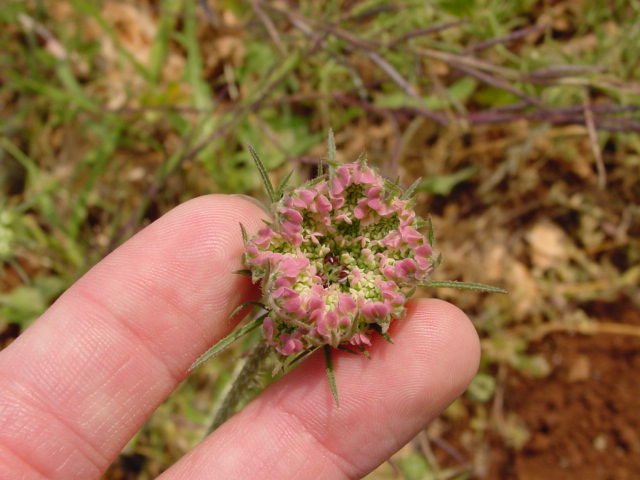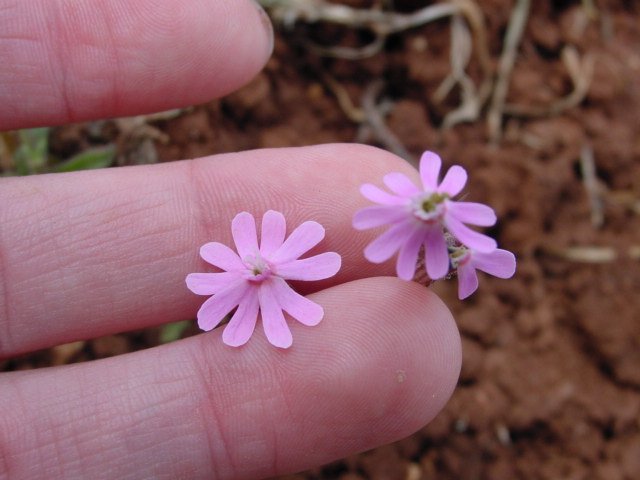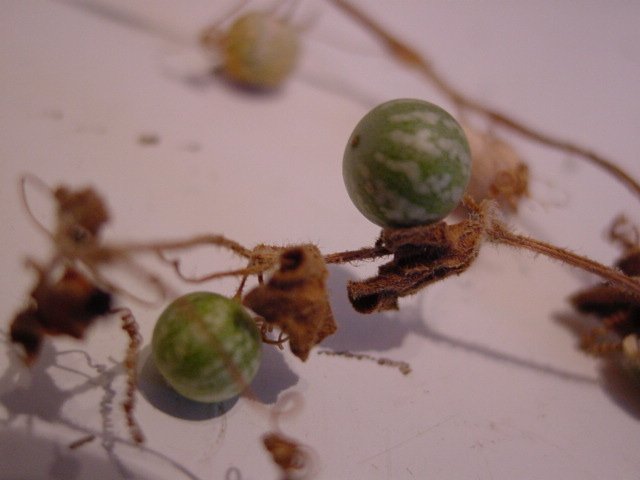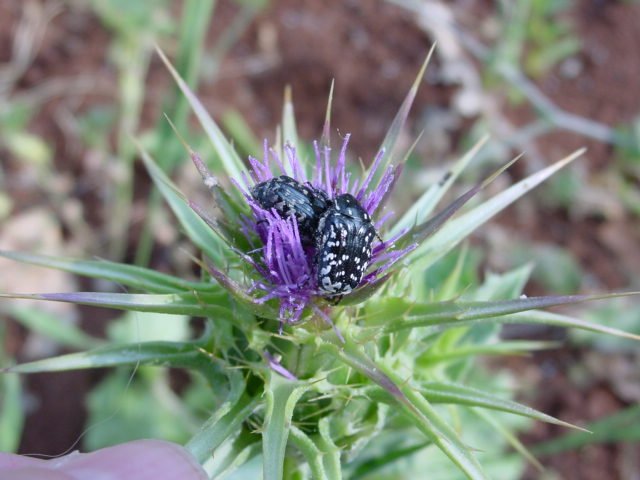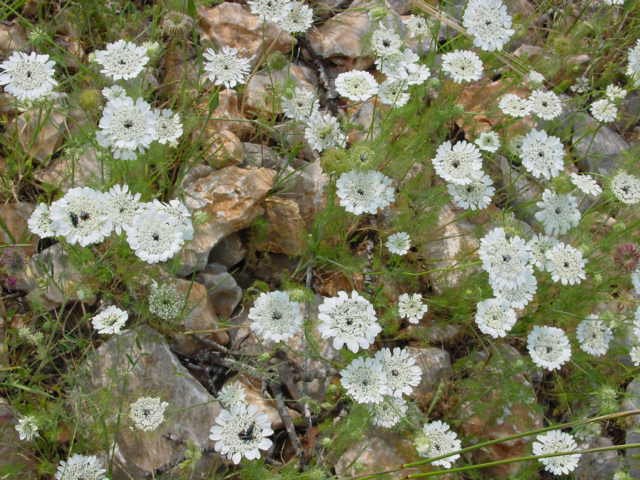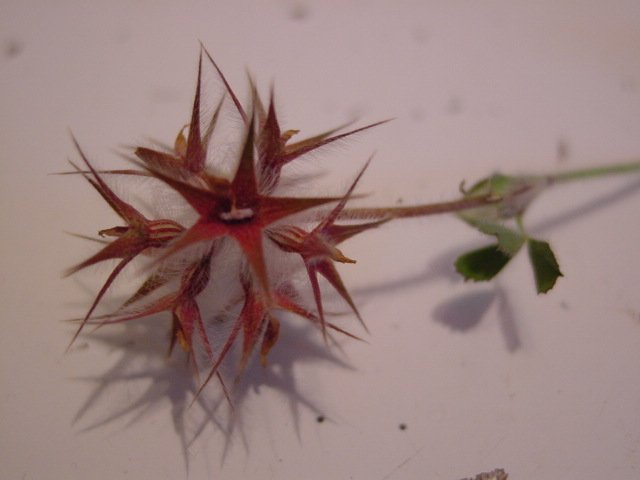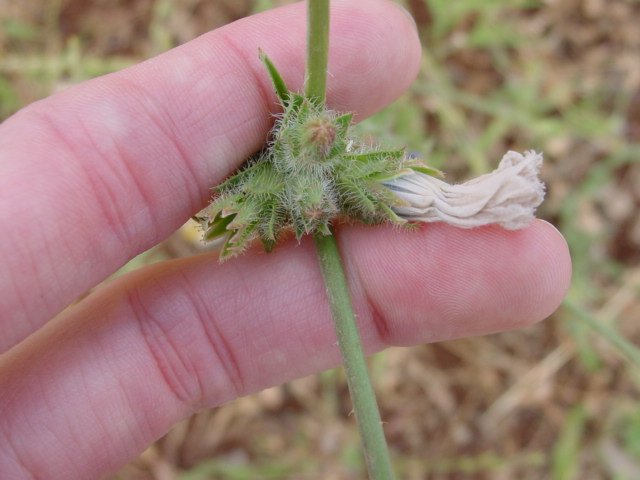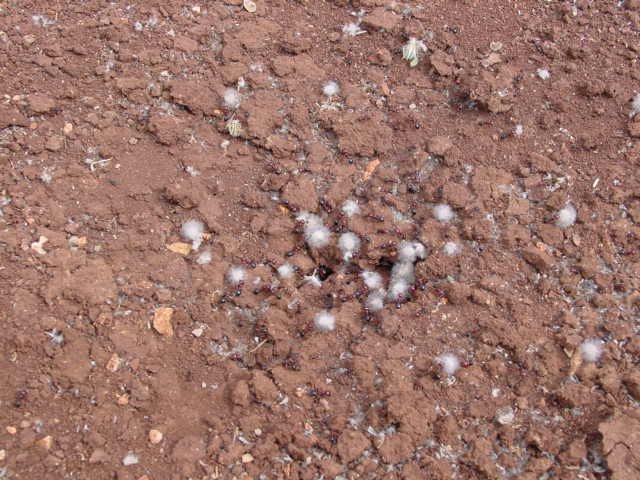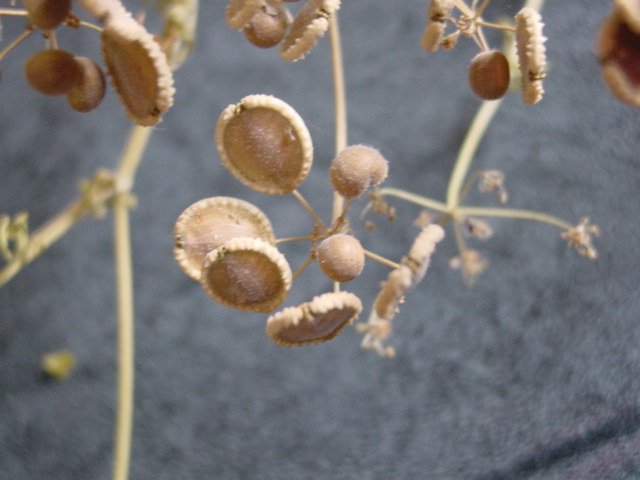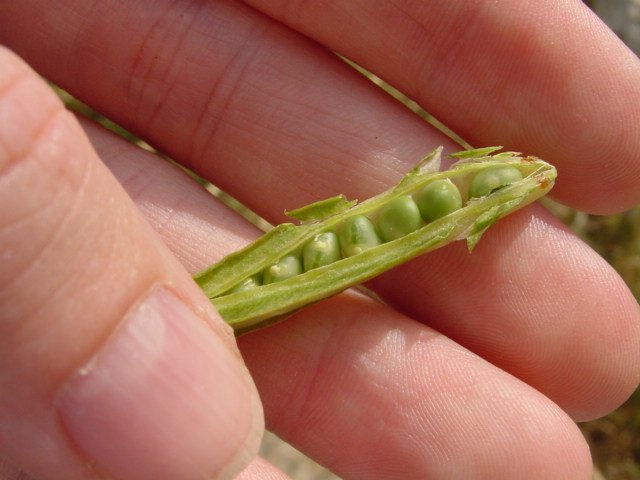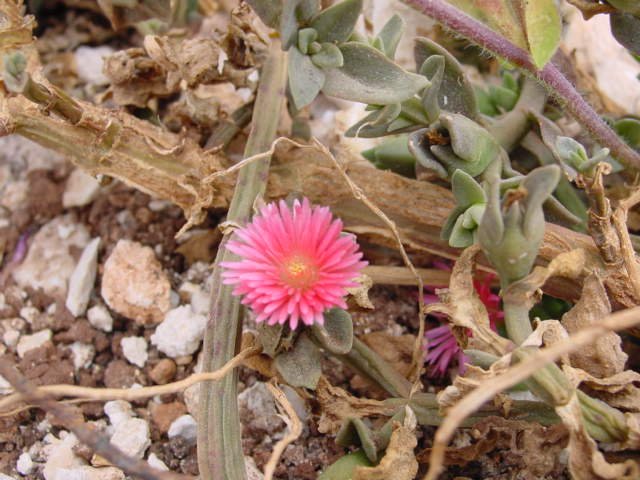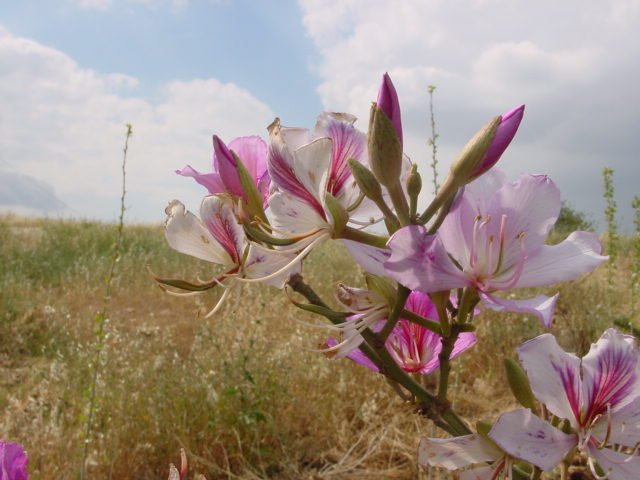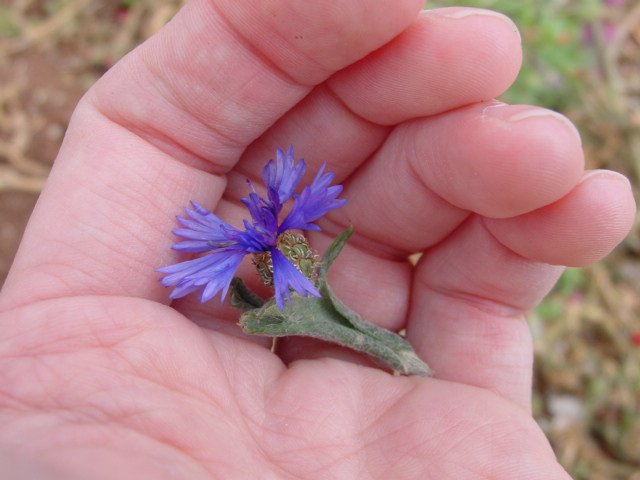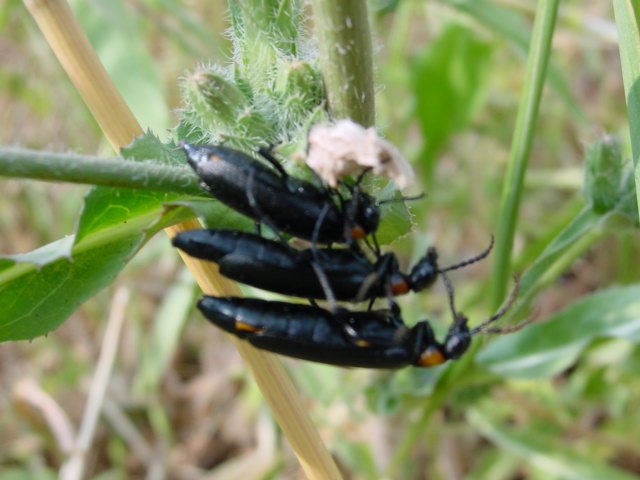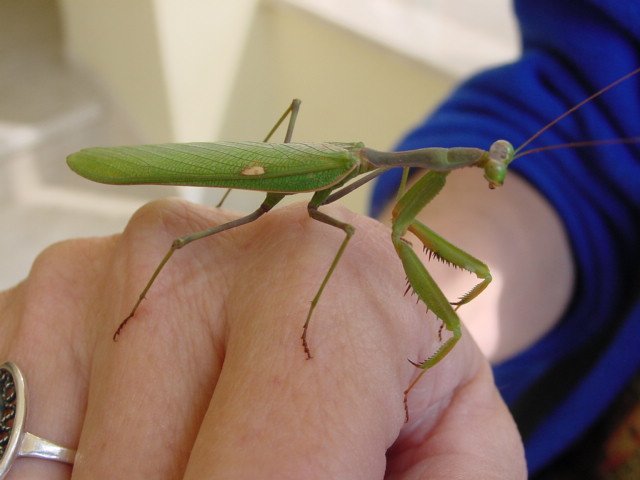Zababdeh Nature - April
April Flora
I believe this tiny purple flower is Strigose bell-flower (Campanula strigosa). Apparently, the flowers resemble bells.
I'm not sure if this is wild barley (Hordeum bulbosum) or wheat from an errant seed of nearby fields. The wild barley that grows here is an ancestor of cultivated barley.
I was enchanted by these minuscule yellow flowers, cupped by leafy green sepals (I think). These appear to be called Hare's ear (Bupleurum lancifolium). It is in the carrot family.
This is the winged pea (Tetragonolobus palaestinus). It is, as you might have guessed, in the pea family.
This is called Bishop's weed (Ridolfia segetum). At first I thought it was a kind of fennel because of its appearance and good smell. Like fennel, it is in the carrot family; it is also "full of etheric essence" and often used in pickling.
This looks a little like Behen centaury (Centaurea cyanoides) except the petals are too pink and too narrow. It looks a little like Amberboa (Amberboa crupinoides) except there are no yellow florets in the center (plus it was not growing in the desert). At any rate, it is most probably in the daisy family.
Purple clover. A familiar face.
Perhaps this is a just-opened variety of Crown flower?
This looks a lot like a relative of Egyptian campion (Silene aegyptiaca), except these flowers seem to have 10 petals, and those seem to have 5.
Wild oat (Avena sterilis) is an ancestor of cultivated oats and is pretty common here.
I was told that this was a locust tree (Ceratonia siliqua), also known as carob or John's Bread Tree, because of the Bible passage in Matthew 3:4 which refers to John the Baptist eating locusts and wild honey. Of course, as a child, I thought that meant John spent time munching on grasshoppers. Ew.
These little fruits look just like teeny tiny watermelons.
It is amazing to see the diversity of thistles here. I saw these in April, but earlier this year I saw many others. I think this one is probably Holy milk-thistle (Silybum maritimum). Notice the nice beetles on the milk thistle. If I could find an English insect guidebook for this region, I could guess at what they are.
I'm not sure what this green thistle is.
Another thistle. I think this one is Star thistle or Knapweed (Centaurea hahyalolepis).
This beauty isn't in my guidebook! Perhaps it is an escaped cultivar from the university's grounds. Feeling inspired, I have dubbed it "Zababdeh bottlebrush." for now.
This flower is called Crown flower (Artedia squamata) and is in the carrot family. The beetles really seem to like it.
Another crown flower.
A patch of crown flowers.
At the beginning of April, olive trees are in full bloom.
Even in the beginning of April you can see some of the desiccated flowers that dominate the summer scene.
Fuzzy seeds!
Another desiccated flower.
More beautifully desiccated flowers.
I can't find this flower in my book. The blossoms are at knobby joints in the stem of the plant, and seem to change from blue to white as they develop.
Here it is in the earlier white stage.
In early April, when many flowers starting to bloom, there are also seeds about the business of dispersal.
The swirl on these is magnificent.
Pea pod.
More seeds spreading.
Barbed for dispersal.
Fantastic pods!
Pea pod opened.
These were growing near some landscaped areas on the campus of the new Arab American University of Jenin (AAUJ). I think they're cultivars, but they sure are nice.
Another AAUJ (possible) cultivar.
A bright pink specimen at AAUJ.
Unlike one of this month's mystery flowers, this specimen seems very much like Behen centaury (Centaurea cyanoides). It resembles the cornflower of Europe. While this species is soft, most of the others members of its genus are prickly.
April Fauna
These three were too busy with each other to notice as I moved their branch around to take a picture.
As our neighbor was plowing his field, the birds (including the blackbirds and cattle egrets so common here) were very excited to follow, I would imagine to eat the worms and grubs and insects turned up by the tractor.
This little fly with pretty wings sat still on my little finger.
I was so very happy when this fellow sat still long enough for me to take a picture.
What a good looking critter! In February and March I saw a lot of grasshoppers too.
This praying mantis became quite at home on our friend's shoulder as we went for a walk in the hills. What a beauty!



